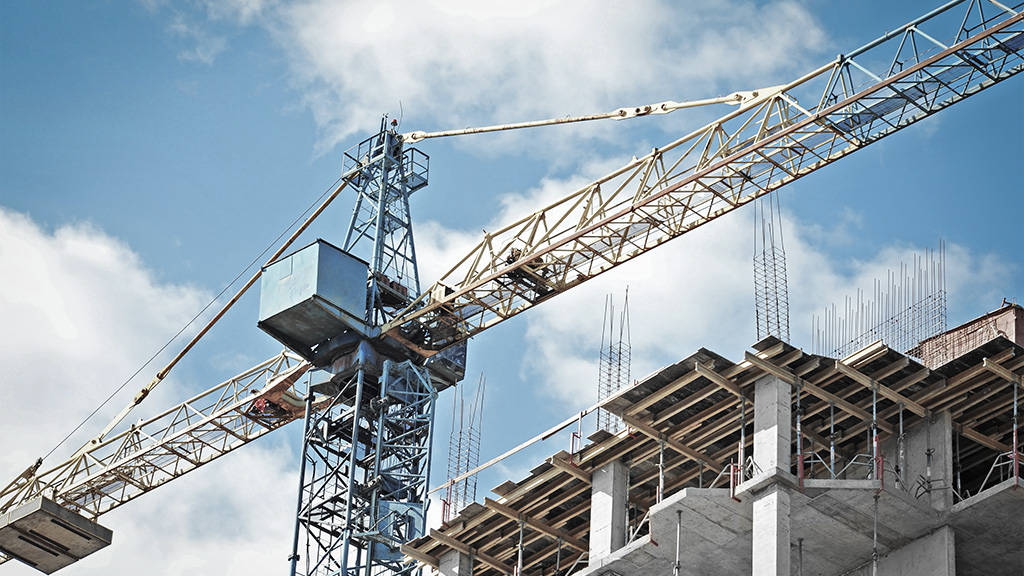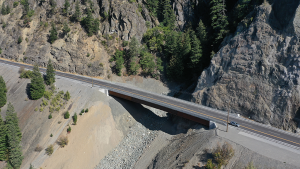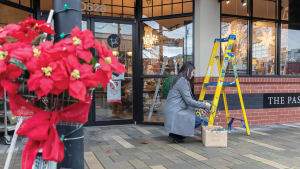B.C.’s crane stakeholders are calling for change after two crane collapses in the Lower Mainland in the space of a week.
International Union of Operating Engineers (IUOE) Local 115 in Burnaby, B.C. responded to the Surrey incident on Jan. 30 and the Burnaby crane collapse on Jan. 26 by calling for mandatory certification of crane operators and rigging personnel in a .
“IUOE Local 115 has been advocating for provincial training and certification of crane operation and rigging personnel to meet the highest standard in Canada for the better part of more than two decades, but B.C. continues to fall short of that expectation,” the release stated.
“It’s shocking you have two accidents like this in a week. How incredibly fortunate we were that nobody was seriously injured or killed, but these two accidents need to be the impetus for change,” IUOE Local 115 assistant business manager Josh Towsley said.
In addition to the two crane collapses recently, Towsley also cited the crane collapse in Kelowna, B.C. on July 12, 2021 which took the lives of five individuals as a warning that has not yet been heeded.
“July 2021 should have been the call that B.C. needed to become the leader in tower crane safety, and for some reason it wasn’t. Now we’ve had two more accidents and we’re only just lucky that no one was killed. We need to make these the impetus for change,” Towsley said.
What are some recommendations for change?
The IUOE gave several recommendations to government and industry, including:
- Recognizing tower crane operation and rigging as a compulsory trade and requiring training and certification for all crane workers in B.C.
- Ensuring provincial training and certification of crane operation and rigging personnel meets the recognized highest standards in Canada (B.C. needs to be a leader).
- Mandatory licensing of contractors who work in the assembly, climbing, repositioning and disassembly of tower cranes.
- Development of minimum levels of training for workers who work in the assembly, climbing, repositioning or disassembly of tower cranes.
Towsley said WorkSafeBC regulations require that crane operators are certified and organizations such as the BC Association for Crane Safety (BCACS) and Fulford Certification act as the registry and assessor for certification.
“But you don’t have a robust training program for tower crane operators, so WorkSafeBC has found it very difficult to enforce their own regulations when they can’t point an operator somewhere to go get the training,” he said.
Towsley said currently the tower crane curriculum is embedded within the mobile crane apprenticeship program and “the expectation is that someone who’s going to run a tower crane is going to sit through several weeks of subject matter that don’t really pertain to their work in order to gain their certification and experience tells us they’re just not willing to do that.”
He added the IUOE is working with SkilledTradesBC to have tower crane curriculum as a standalone course and make it a compulsory trade, meaning in order to work one must be a certified journeyperson or registered apprentice.
“We’ve invested about $2 million in tower cranes, one of which is fixed and another that is a self-erect we can move around the site and we have to work with SkilledTradesBC on curriculum development, but I’m very hopeful we will see the tower crane operator be a compulsory trade through SkilledTradesBC soon,” Towsley said.
Kelowna crane collapse report still under wraps
In a written statement to the Journal of Commerce, the BCACS said “crane operator certification is 100 per cent mandatory and has been a legal requirement in B.C. under the Occupational Health and Safety Regulation since 2007. BC Crane Safety also supported IUOE’s recent nomination of mobile and tower crane operator’s inclusion into the compulsory trades program.”
The BCACS also said while details of the Kelowna crane collapse have not yet been released, industry discussions after the tragedy resulted in municipal policy changes, development of new regulations and more resources.
“Examples include the City of Vancouver pilot project which has since become mandatory (requiring all stakeholder parties to submit and sign-off on documented procedures and safe lift plans for tower crane assembly and disassembly), which other jurisdictions have also incorporated; the development of new resources and checklists available from the BC Crane Safety website’ and the introduction of WorkSafeBC regulation and guideline changes to include the use of zone protection and anti-collison devices; and changes to Part 14 of the OHSR requiring the submission of Notice of Project documentation specific to tower crane assembly, disassembly, and repositioning,” the BCACS statement said.
The Journal of Commerce reached out to WorkSafeBC, which also provided a statement.
“WorkSafeBC’s incident investigation report into the Kelowna crane collapse is complete and a copy of the report has been received by the Kelowna RCMP. Last year, a decision was made, in consultation with the RCMP, to not release the WorkSafeBC investigation report publicly to ensure it does not jeopardize the ongoing and concurrent criminal investigation,” the WorkSafeBC statement said.
The Kelowna RCMP were unable to provide comment at this time.










Recent Comments
comments for this post are closed